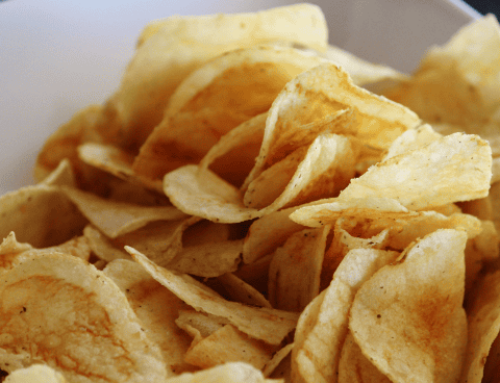You hear it over and over. Organic foods hold the upper hand over processed foods in terms of their overall health benefits. The common sentiment seems to be the more natural a food is, the better it is for you. Processed foods can get cluttered with chemicals and other questionable ingredients, but with organic products it’s easier to know exactly what you’re putting into your body.
Old habits can be hard to break. Suddenly switching to an all-organic diet can be costly and inconvenient. But that doesn’t mean you should give up entirely on going organic. With a number of foods, buying organic can make a big difference. If switching to an all-organic diet won’t happen for you, here are five foods that you can easily buy organic—and that’ll serve you up tremendous benefits.
RELATED: How to Eat Organic Without Breaking the Bank
1. Kick Up Your Ketchup
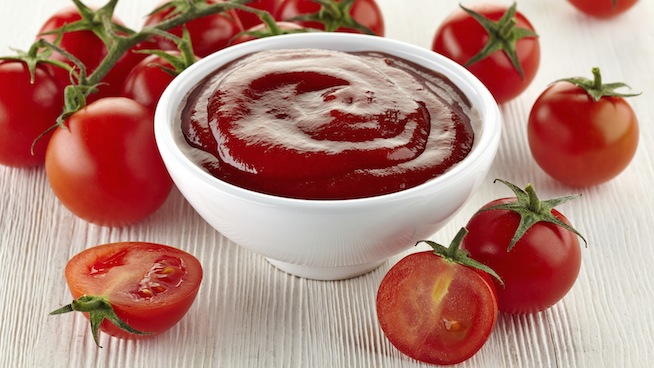
If you’re one of those people who thinks ketchup is technically a vegetable, let me drop some knowledge on you. If you’re talking about processed ketchup, you’re pretty much completely wrong. But if you’re talking about organic ketchup, you might have a point (though you still shouldn’t replace real veggies with ketchup). Everyone’s favorite tomato-based condiment complements nearly any food, but people have a tendency to use much more than the recommended serving size.
This is especially problematic with conventional processed ketchup. Although organic ketchup and processed ketchup are fairly similar in their nutritional profiles—both are high in sugar, but organic is slightly lower in sodium and calories—the higher antioxidant content of organic ketchup is redeeming. Organic ketchup contains higher levels of polyphenolic compounds such as phenolic acids, flavonols and flaganones, which can aid in the prevention of cancer and cardiovascular disease, among other ailments. One study found that organic ketchups contain three times the amount of lycopene than fast-food ketchup; another found that organic tomatoes (the ones used in making organic ketchup) contain 55 percent more vitamin C.
2. Organic Milk Balances the Healthy Fats
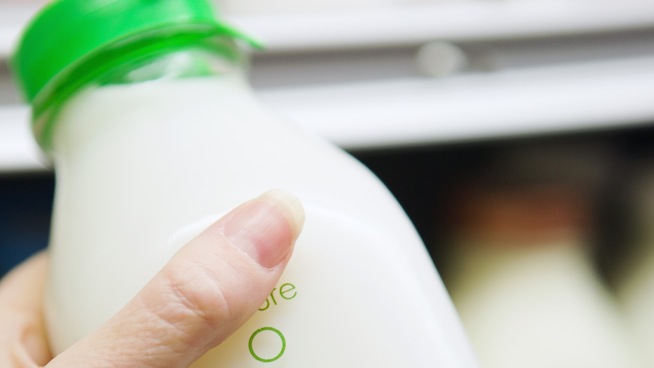
The life of the cow greatly impacts the quality of the milk it produces. Ideally, the cow has been grass-fed (as opposed to grain-fed), allowed to graze freely and be without antibiotics and growth hormones. Although the nutrition profiles of organic and non-organic milk may look nearly identical on their labels, a big difference lies in the types of fat they contain. Research has shown that organic milk contains 62 percent more omega-3 fatty acids and 25 percent less omega-6 fatty acids than non-organic milk. The benefits of a diet high in omega-3 fatty acids has been noted before, but a truly healthy diet cannot be attained if the ratio of omega-6 to omega-3 fatty acids isn’t optimal.
The typical American diet consists of a ratio of roughly 16-1, a far cry from the diet of our ancestors, which featured a ratio of 1-1. A high ratio can lead to numerous diseases, increased inflammation, arthritis, asthma and more. It’s been concluded that “a lower ratio of omega-6 to omega-3 fatty acids is more desirable in reducing the risk of many of the chronic diseases of high prevalence in western societies.” While organic milk is the better option, you should still avoid it if you’re lactose intolerant.
RELATED: Organic Milk Is Actually Better For You. Here’s Why.
3. Better Peanut Butter
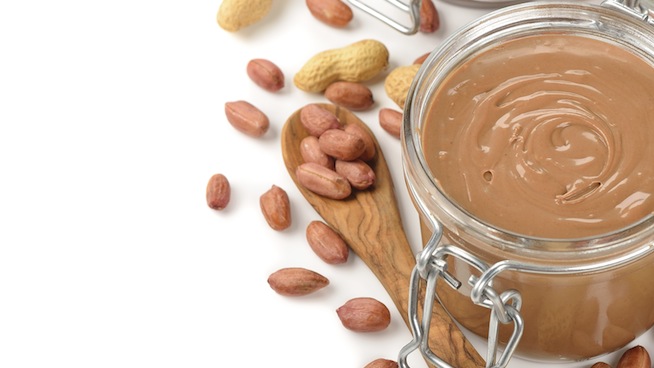
Many athletes love peanut butter because it tastes good, is super convenient and packs a significant amount of protein. And if you choose to go organic, there’s even more to like. Organic peanut butter is significantly lower in sodium and sugar than many popular processed brands, but it still provides the same amount of (if not more) protein. If you choose an organic peanut butter that has “no salt added” or is “unsalted,” it makes for an even more nutritious choice.
Other options, such as Trader Joe’s Crunchy Salted Peanut Butter with Flax and Chia Seeds, bring more to the table than typical processed peanut butter. Flax and chia seeds provide high levels of omega-3 fatty acids, which the body cannot produce by itself. Omega-3 fatty acids are especially useful for athletes because they fight inflammation; aid physical growth and development and brain function; and combat heart disease. (The full benefits of omega-3 fatty acids are too numerous to list.) Don’t worry about the fact that the Trader Joe’s product is “salted.” It contains a very small amount—only 10 mg of sodium per serving—compared to the 150 mg found in most processed peanut butters.
4. Organic Whole Grain Bread
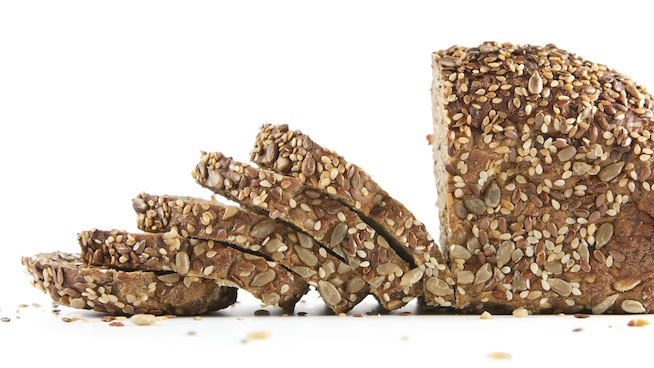
White bread has become a nutritional pariah in recent years, and not without reason. It uses refined grains, is loaded with carbs and has a high glycemic index. Whole grains consist of three parts—the bran, the endosperm and the germ. The bran and the germ are the most nutritious parts of the grain, but during the refining process they are removed. You’re left with the least nutritious part of the grain. Favoring whole-grain bread over white bread is a nutritional no-brainer. A new study found that eating whole grains daily can have a profound effect on life expectancy. A good tip for buying healthy bread is to make sure the first ingredient is “organic whole-wheat flour,” as opposed to “enriched bleach flour” or simply “wheat flour.” And don’t be fooled by breads labeled “natural”—it should say “organic.”
A recent study that compared organic, natural and conventional breads found that 63 percent of organic bread ingredients were significant sources of important nutrients, compared to only 27 percent of conventional bread ingredients. Organic breads also contain 49 percent whole food ingredients, which means they’re unrefined and unprocessed, compared to 24 percent in natural breads and only 7 percent in conventional breads. A different study found that the production, packaging and distribution of organic bread causes up to 25 percent less CO2 emissions than conventional bread. So organic bread isn’t just better for your body, it’s good for the planet as well.
5. When to Be Picky About Your Produce
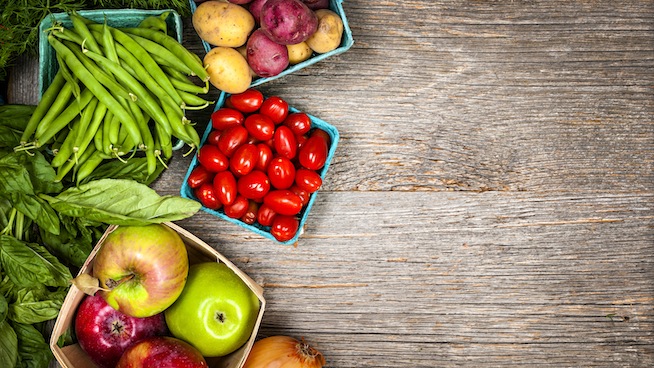
Buying organic fruits and vegetables is frequently advised to avoid the high level of pesticides detected in much non-organic produce. Many studies aimed at understanding the full risks of pesticides are still ongoing; however, ingesting pesticides has been linked to an increased risk of cancer, neurological disorders, birth defects, endocrine interruption and many other issues.
Every year, the Environmental Working Group releases its annual “Dirty Dozen” and “Clean Fifteen.” The Dirty Dozen refers to the 12 pieces of inorganic produce containing the most pesticides. The Clean Fifteen refers to the 15 pieces of inorganic produce containing the fewest pesticides.
Since buying purely organic produce might not be possible for you, it’s best to use these lists as a guide. For instance, popular items such as strawberries, apples and celery were in the top 4 of the 2014 Dirty Dozen. Strawberries ranked among the dirtiest, with 99 percent of samples testing positive for at least one pesticide. So if you can only buy a few types of organic produce, it would be smart to choose organic varieties of foods in the Dirty Dozen. On the flip side, avocados were found to be the cleanest produce, with only one percent of samples testing positive for pesticides. Sweet corn and pineapples were also in the top 3 of the 2014 Clean Fifteen. Thus, buying inorganic versions of these items is less risky.
RECOMMENDED FOR YOU
MOST POPULAR
You hear it over and over. Organic foods hold the upper hand over processed foods in terms of their overall health benefits. The common sentiment seems to be the more natural a food is, the better it is for you. Processed foods can get cluttered with chemicals and other questionable ingredients, but with organic products it’s easier to know exactly what you’re putting into your body.
Old habits can be hard to break. Suddenly switching to an all-organic diet can be costly and inconvenient. But that doesn’t mean you should give up entirely on going organic. With a number of foods, buying organic can make a big difference. If switching to an all-organic diet won’t happen for you, here are five foods that you can easily buy organic—and that’ll serve you up tremendous benefits.
RELATED: How to Eat Organic Without Breaking the Bank
1. Kick Up Your Ketchup

If you’re one of those people who thinks ketchup is technically a vegetable, let me drop some knowledge on you. If you’re talking about processed ketchup, you’re pretty much completely wrong. But if you’re talking about organic ketchup, you might have a point (though you still shouldn’t replace real veggies with ketchup). Everyone’s favorite tomato-based condiment complements nearly any food, but people have a tendency to use much more than the recommended serving size.
This is especially problematic with conventional processed ketchup. Although organic ketchup and processed ketchup are fairly similar in their nutritional profiles—both are high in sugar, but organic is slightly lower in sodium and calories—the higher antioxidant content of organic ketchup is redeeming. Organic ketchup contains higher levels of polyphenolic compounds such as phenolic acids, flavonols and flaganones, which can aid in the prevention of cancer and cardiovascular disease, among other ailments. One study found that organic ketchups contain three times the amount of lycopene than fast-food ketchup; another found that organic tomatoes (the ones used in making organic ketchup) contain 55 percent more vitamin C.
2. Organic Milk Balances the Healthy Fats

The life of the cow greatly impacts the quality of the milk it produces. Ideally, the cow has been grass-fed (as opposed to grain-fed), allowed to graze freely and be without antibiotics and growth hormones. Although the nutrition profiles of organic and non-organic milk may look nearly identical on their labels, a big difference lies in the types of fat they contain. Research has shown that organic milk contains 62 percent more omega-3 fatty acids and 25 percent less omega-6 fatty acids than non-organic milk. The benefits of a diet high in omega-3 fatty acids has been noted before, but a truly healthy diet cannot be attained if the ratio of omega-6 to omega-3 fatty acids isn’t optimal.
The typical American diet consists of a ratio of roughly 16-1, a far cry from the diet of our ancestors, which featured a ratio of 1-1. A high ratio can lead to numerous diseases, increased inflammation, arthritis, asthma and more. It’s been concluded that “a lower ratio of omega-6 to omega-3 fatty acids is more desirable in reducing the risk of many of the chronic diseases of high prevalence in western societies.” While organic milk is the better option, you should still avoid it if you’re lactose intolerant.
RELATED: Organic Milk Is Actually Better For You. Here’s Why.
3. Better Peanut Butter

Many athletes love peanut butter because it tastes good, is super convenient and packs a significant amount of protein. And if you choose to go organic, there’s even more to like. Organic peanut butter is significantly lower in sodium and sugar than many popular processed brands, but it still provides the same amount of (if not more) protein. If you choose an organic peanut butter that has “no salt added” or is “unsalted,” it makes for an even more nutritious choice.
Other options, such as Trader Joe’s Crunchy Salted Peanut Butter with Flax and Chia Seeds, bring more to the table than typical processed peanut butter. Flax and chia seeds provide high levels of omega-3 fatty acids, which the body cannot produce by itself. Omega-3 fatty acids are especially useful for athletes because they fight inflammation; aid physical growth and development and brain function; and combat heart disease. (The full benefits of omega-3 fatty acids are too numerous to list.) Don’t worry about the fact that the Trader Joe’s product is “salted.” It contains a very small amount—only 10 mg of sodium per serving—compared to the 150 mg found in most processed peanut butters.
4. Organic Whole Grain Bread

White bread has become a nutritional pariah in recent years, and not without reason. It uses refined grains, is loaded with carbs and has a high glycemic index. Whole grains consist of three parts—the bran, the endosperm and the germ. The bran and the germ are the most nutritious parts of the grain, but during the refining process they are removed. You’re left with the least nutritious part of the grain. Favoring whole-grain bread over white bread is a nutritional no-brainer. A new study found that eating whole grains daily can have a profound effect on life expectancy. A good tip for buying healthy bread is to make sure the first ingredient is “organic whole-wheat flour,” as opposed to “enriched bleach flour” or simply “wheat flour.” And don’t be fooled by breads labeled “natural”—it should say “organic.”
A recent study that compared organic, natural and conventional breads found that 63 percent of organic bread ingredients were significant sources of important nutrients, compared to only 27 percent of conventional bread ingredients. Organic breads also contain 49 percent whole food ingredients, which means they’re unrefined and unprocessed, compared to 24 percent in natural breads and only 7 percent in conventional breads. A different study found that the production, packaging and distribution of organic bread causes up to 25 percent less CO2 emissions than conventional bread. So organic bread isn’t just better for your body, it’s good for the planet as well.
5. When to Be Picky About Your Produce

Buying organic fruits and vegetables is frequently advised to avoid the high level of pesticides detected in much non-organic produce. Many studies aimed at understanding the full risks of pesticides are still ongoing; however, ingesting pesticides has been linked to an increased risk of cancer, neurological disorders, birth defects, endocrine interruption and many other issues.
Every year, the Environmental Working Group releases its annual “Dirty Dozen” and “Clean Fifteen.” The Dirty Dozen refers to the 12 pieces of inorganic produce containing the most pesticides. The Clean Fifteen refers to the 15 pieces of inorganic produce containing the fewest pesticides.
Since buying purely organic produce might not be possible for you, it’s best to use these lists as a guide. For instance, popular items such as strawberries, apples and celery were in the top 4 of the 2014 Dirty Dozen. Strawberries ranked among the dirtiest, with 99 percent of samples testing positive for at least one pesticide. So if you can only buy a few types of organic produce, it would be smart to choose organic varieties of foods in the Dirty Dozen. On the flip side, avocados were found to be the cleanest produce, with only one percent of samples testing positive for pesticides. Sweet corn and pineapples were also in the top 3 of the 2014 Clean Fifteen. Thus, buying inorganic versions of these items is less risky.

